Introduction
A3 Problem Solving stands as a cornerstone within the Lean management toolkit, embodying the essence of simplicity and clarity in problem resolution. Named after the international paper size that its reports are typically written on, this tool not only fosters problem-solving skills but also succinctly communicates complex issues and their solutions.
History and Development
Originating from Toyota and deeply rooted in the Toyota Production System (TPS), the A3 Problem Solving tool has transcended industries. Developed as part of TPS’s robust continuous improvement program, it has evolved into a universal problem-solving methodology that emphasizes PDCA (Plan-DoCheck-Act).
Key Principles
The A3 Problem Solving tool is underpinned by several key principles: concise communication, a structured problem-solving approach, and the PDCA cycle. Its backbone is the A3 report, a one-page document designed to encapsulate the problem, analysis, solutions, and action plans.
When to Use the Tool
This versatile tool should be employed when a problem requires a thorough analysis before reaching a solution, particularly when cross-functional team inputs are necessary. It’s especially effective for chronic, recurring issues that have significant impact on operations.

How It Works
The A3 Problem Solving process is a structured methodology designed to tackle complex issues systematically, promoting clarity, collaboration, and effective problem resolution. At its core, it follows a step-by-step approach that begins with problem identification and culminates in sustainable solutions. Let’s delve deeper into each phase to understand how this process unfolds.
1. Problem Identification:
The journey starts with clearly defining the problem at hand. This initial step is crucial as it sets the foundation for the entire process. Teams involved in A3 Problem Solving must articulate the problem in a concise and precise manner, ensuring that all stakeholders have a shared understanding of the issue. Effective problem identification requires keen observation, data gathering, and input from relevant parties.
2. Current State Analysis:
Once the problem is identified, teams conduct a thorough analysis of the current state. This involves examining existing processes, workflows, and systems to understand the root causes contributing to the problem. Tools such as process maps, value stream analysis, and data analysis techniques are employed to gain insights into the underlying factors driving the issue. By dissecting the current state, teams can pinpoint areas of inefficiency, waste, or variation that need to be addressed.
3. Goal Setting:
With a clear understanding of the problem and its underlying causes, teams define their desired future state. Setting SMART (Specific, Measurable, Achievable, Relevant, Time-bound) goals helps focus efforts and provides a benchmark for success. Goals should be aligned with organizational objectives and reflect the desired outcomes of the problem-solving initiative. Establishing clear goals ensures that efforts are directed towards meaningful outcomes and helps measure progress throughout the process.
4. Root Cause Analysis:
Central to the A3 Problem Solving process is the identification of root causes. Teams employ various tools and techniques, such as the 5 Whys, Fishbone (Cause-and-Effect) diagrams, Pareto analysis, and statistical methods, to delve deeper into the underlying factors contributing to the problem. By systematically asking “why” and probing deeper into causal relationships, teams uncover the fundamental issues driving the problem. A robust root cause analysis is essential for developing effective and sustainable solutions.
5. Solution Generation and Implementation:
Armed with insights from the root cause analysis, teams brainstorm potential solutions to address the identified issues. Creativity and innovation are encouraged during this phase as teams explore different approaches and alternatives. Once solutions are identified, teams develop an implementation plan outlining specific actions, responsibilities, timelines, and success criteria. Implementation involves executing the plan, monitoring progress, and making adjustments as necessary to ensure successful outcomes.
6. Monitoring and Standardization:
The final phase of the A3 Problem Solving process involves monitoring the implemented solutions and assessing their effectiveness. Teams track key performance indicators (KPIs) to measure progress and evaluate whether the desired outcomes have been achieved. Successful solutions are standardized to institutionalize best practices and ensure consistent performance. However, if the solution falls short of expectations, teams iterate through the PDCA cycle, refining their approach based on lessons learned and feedback from stakeholders.
In summary, the A3 Problem Solving process provides a structured framework for tackling complex problems methodically. By emphasizing clear communication, data-driven analysis, and collaborative problem-solving, it enables organizations to identify root causes, develop effective solutions, and drive continuous improvement. Through iterative cycles of learning and adaptation, teams can navigate challenges, optimize processes, and achieve sustainable results.
Benefits
The A3 Problem Solving tool offers numerous benefits. It enhances understanding and promotes a deeper investigation of issues rather than superficial fixes. The process cultivates a collaborative culture of problem-solving and knowledge sharing, ensuring solutions are effectively communicated and understood by all involved parties.
Common Mistakes and Pitfalls
Common pitfalls in A3 Problem Solving include inadequate root cause analysis, jumping to solutions without proper data, and lack of follow-through. Another frequent error is the exclusion of key stakeholders from the problem-solving process, which can lead to missed insights and resistance to change.
Tips for Success
To ensure success with the A3 Problem Solving tool, engage all relevant stakeholders, focus on root cause analysis, and be prepared to iterate through the PDCA cycle more than once. Maintain open communication channels and be flexible, allowing the solution to evolve based on findings.

Integration With Other Lean Tools
A3 Problem Solving can be integrated with other Lean tools such as Value Stream Mapping for process analysis, and Kaizen for continuous improvement, to enhance its effectiveness.
FAQs
What does A3 stand for?
A3 refers to the size of the paper (11×17 inches) used for the report, symbolizing the tool’s emphasis on conciseness.
Can A3 Problem Solving be used for any type of problem?
While A3 is versatile, it is most effective for complex problems that benefit from a structured approach.
Is A3 Problem Solving only for manufacturing?
No, A3 Problem Solving has been successfully applied in various sectors, including healthcare, finance, and education.
Do you need special software to create an A3?
No, the A3 report is typically created on paper or with basic word processing software.
How do you ensure the effectiveness of an A3 Problem Solving process?
Regular follow-up and evaluation of the implemented actions are crucial for assessing effectiveness.
References and Further Reading
For those seeking to delve deeper into the A3 Problem Solving methodology, consider these top three books:
- “Managing to Learn” by John Shook – An insightful exploration into the A3 process from a management perspective.
- “Understanding A3 Thinking” by Durward K. Sobek II and Art Smalley – A comprehensive guide that covers the nuances of A3 reports.
- “The Toyota Way” by Jeffrey K. Liker – Provides a broad understanding of the principles of the Toyota Production System, including A3 Problem Solving.


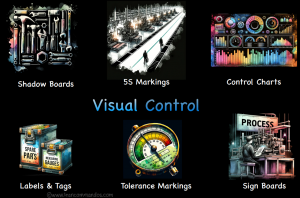
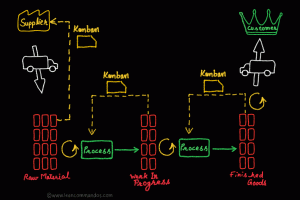
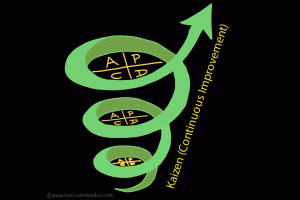
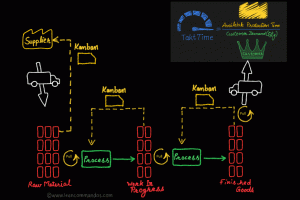
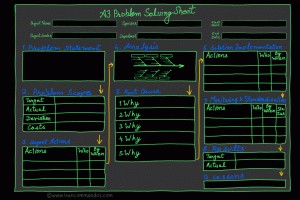

9 Responses
Thank you for sharing with us, I think this website genuinely stands out : D.
I’ve been browsing online greater than three hours as of late, yet I by no means discovered any fascinating article like yours. It’s pretty price enough for me. In my opinion, if all site owners and bloggers made good content as you did, the net will likely be much more helpful than ever before.
This is a topic close to my heart cheers, where are your contact details though?
Major thanks for the blog post.Thanks Again. Cool.
Very efficiently written story. It will be supportive to anybody who employess it, as well as yours truly :). Keep doing what you are doing – looking forward to more posts.
Good – I should certainly pronounce, impressed with your web site. I had no trouble navigating through all the tabs and related information ended up being truly simple to do to access. I recently found what I hoped for before you know it at all. Quite unusual. Is likely to appreciate it for those who add forums or something, website theme . a tones way for your customer to communicate. Excellent task..
You explained this very clearly.
This was really informative.
Super helpful and straight to the point.